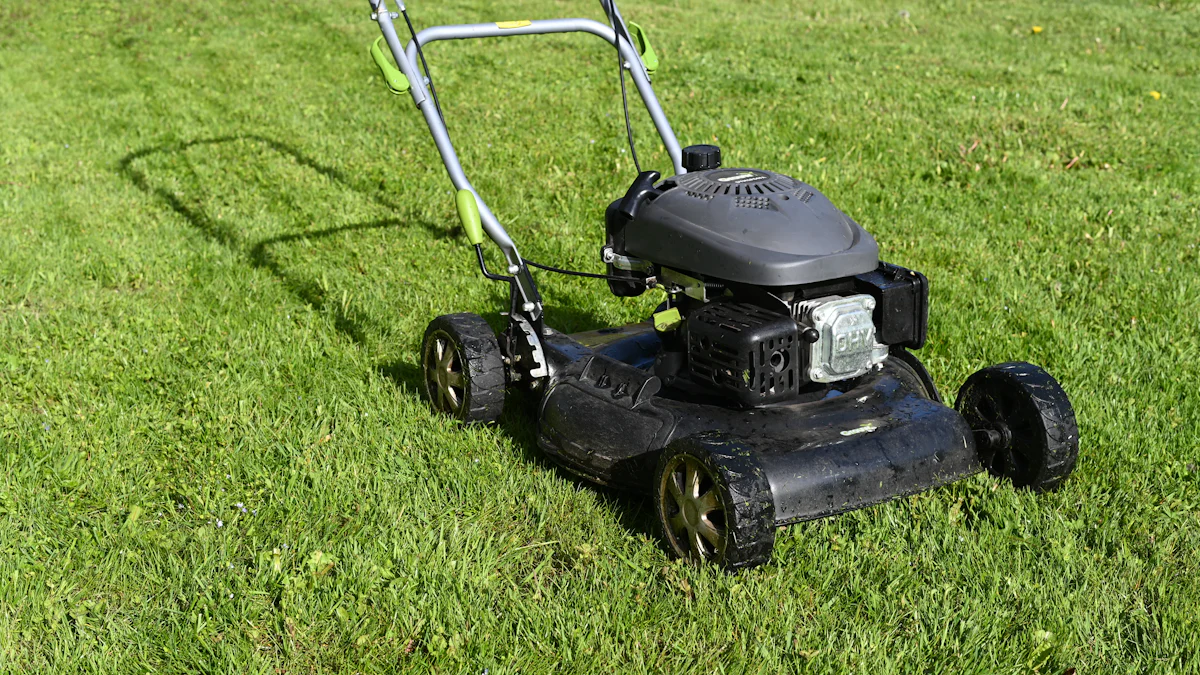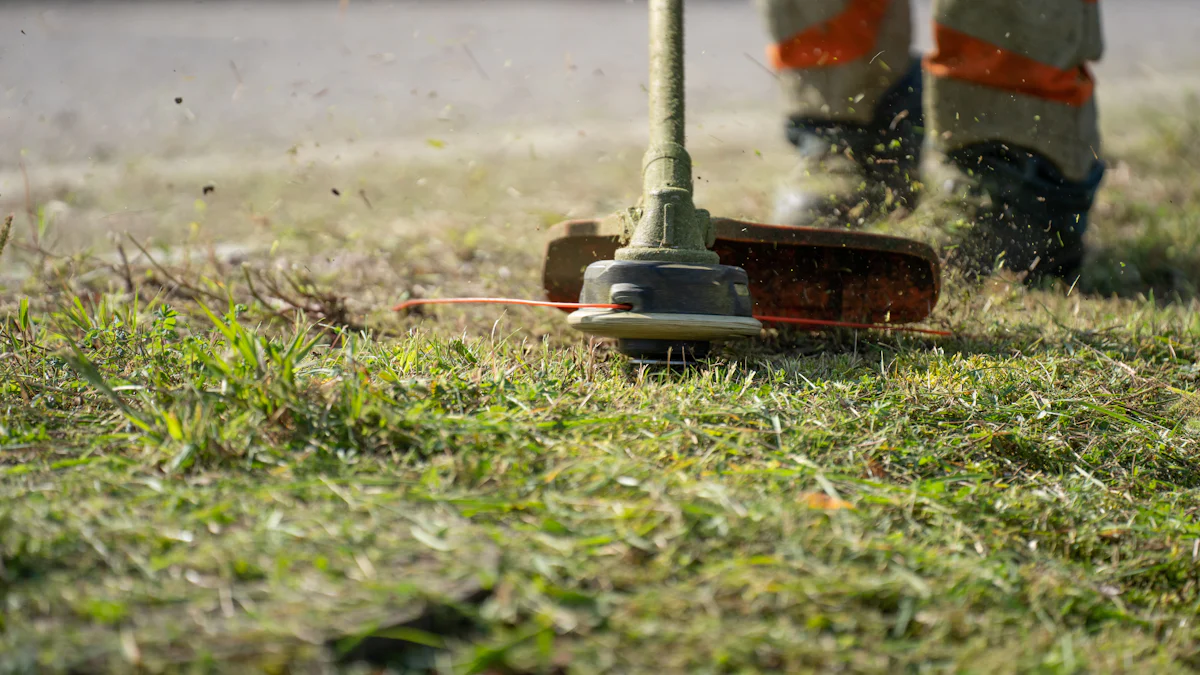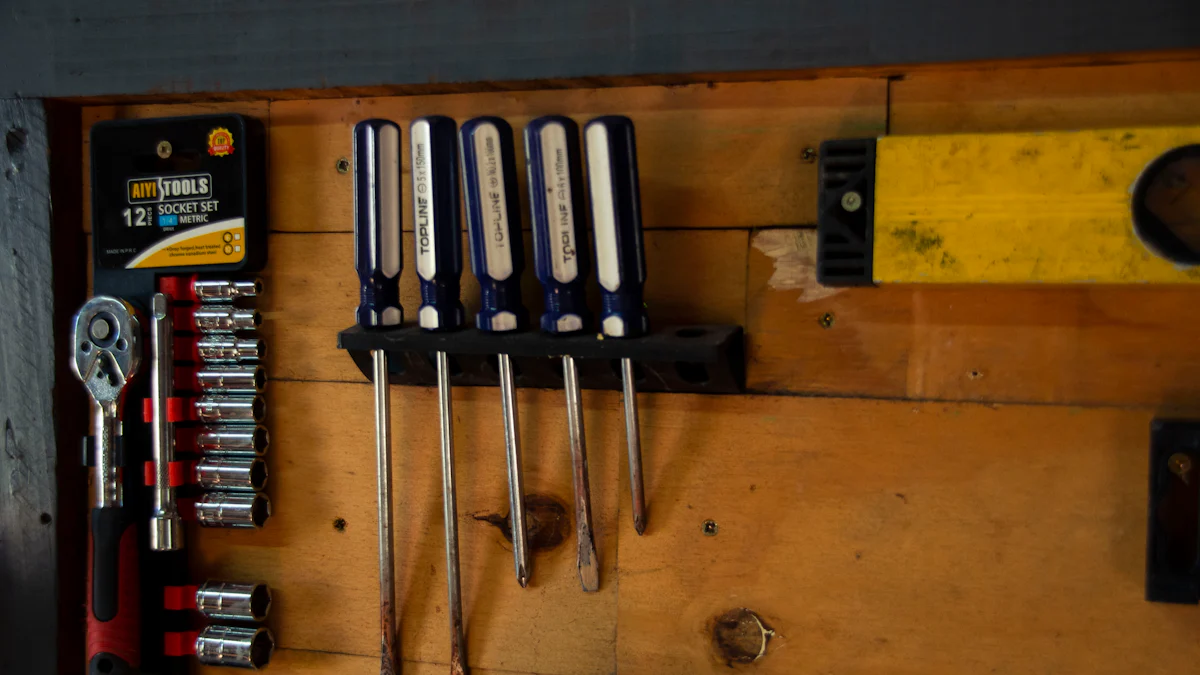
Having the right lawn-cutting tools is crucial for effective lawn care. Proper tools can transform a time-consuming chore into a manageable task. Homeowners who invest in quality equipment often find lawn maintenance easier and more efficient. According to experts, using the correct tools ensures a healthier and more beautiful lawn. Statistics show that 40% of Americans hire professionals for lawn care, highlighting the importance of proper equipment. Quality tools not only save time but also improve the overall appearance of the yard.
Basic Lawn-Cutting Tools

Lawn Mower
Types of Lawn Mowers (Push, Self-Propelled, Riding)
A lawn mower is the most essential tool for any homeowner. There are three main types of lawn mowers: push, self-propelled, and riding. Push mowers require manual effort to move across the lawn. These are ideal for small yards. Self-propelled mowers have a motor that drives the wheels, making them easier to maneuver. Riding mowers are suitable for large lawns. These allow the user to sit and drive, reducing physical effort.
Choosing the Right Lawn Mower for Your Yard Size
Choosing the right lawn mower depends on the size of the yard. For small yards up to 750 sq. ft., a compact electric mower like the BLACK+DECKER® 3in1 Electric Lawn Mower is ideal. This model combines a mower, string trimmer, and edger in one tool. Medium-sized yards benefit from self-propelled mowers. Large yards require riding mowers to cover more ground efficiently.
String Trimmer
Gas vs. Electric String Trimmers
A string trimmer is essential for trimming grass and weeds in hard-to-reach areas. There are gas and electric string trimmers. Gas trimmers offer more power and mobility. These are suitable for larger properties. Electric trimmers are quieter and require less maintenance. These are ideal for smaller yards. The Worx 20V Power Share GT Revolution 12″ String Trimmer is a versatile electric option. It transitions from trimmer to edger to mini-mower without tools.
Best Practices for Using a String Trimmer
Using a string trimmer effectively requires some best practices. Always wear safety gear, including goggles and gloves. Start by trimming around the edges of the lawn. Move in a sweeping motion to avoid scalping the grass. Keep the trimmer head parallel to the ground for an even cut. Regularly check the trimmer line and replace it as needed.
Edger
Manual vs. Motorized Edgers
An edger helps create clean, defined borders along sidewalks, driveways, and flower beds. There are manual and motorized edgers. Manual edgers require physical effort but offer precise control. Motorized edgers are faster and easier to use. These are ideal for larger properties with extensive edging needs.
Tips for Creating Clean Lawn Edges
Creating clean lawn edges enhances the overall appearance of the yard. Start by marking the edge with a garden hose or string. Use the edger to cut along the marked line. Keep the blade vertical for a sharp edge. Remove any debris and trim the grass along the edge regularly. This practice maintains a neat and professional look.
Advanced Lawn-Cutting Tools
Lawn Aerator
Benefits of Aerating Your Lawn
Aerating the lawn improves soil health. This process allows air, water, and nutrients to penetrate the grass roots. Healthy roots grow deeper, creating a stronger and more vigorous lawn. Aeration also reduces soil compaction. Compacted soil prevents proper root growth. Aeration helps alleviate this problem. Regular aeration enhances the lawn’s resilience against drought and disease.
Types of Lawn Aerators (Manual, Mechanical)
Two main types of lawn aerators exist: manual and mechanical. Manual aerators require physical effort. These tools are suitable for small lawns. Examples include spike aerators and plug aerators. Mechanical aerators operate with a motor. These tools cover larger areas quickly. Mechanical aerators are ideal for extensive properties. Both types of aerators improve soil structure and promote healthy grass growth.
Lawn Dethatcher
Why Dethatching is Important
Dethatching removes the layer of dead grass, roots, and debris between the soil and the grass blades. This layer, known as thatch, can prevent water, air, and nutrients from reaching the soil. Excessive thatch leads to poor grass health. Dethatching helps maintain a balanced thatch layer. This process encourages better water absorption and nutrient uptake. A well-dethatched lawn appears healthier and more vibrant.
How to Use a Dethatcher
Using a dethatcher involves several steps. First, mow the lawn to a shorter height. This makes the dethatching process more effective. Next, choose the appropriate dethatching tool. Manual dethatchers suit small lawns. Mechanical dethatchers work best for larger areas. Run the dethatcher across the lawn in a single direction. Collect the removed thatch and dispose of it properly. Water the lawn after dethatching to help it recover.
Lawn Roller
When to Use a Lawn Roller
A lawn roller helps flatten uneven ground. Use a lawn roller after seeding or sodding. Rolling ensures good seed-to-soil contact. This promotes better germination. Rolling also helps smooth out bumps and lumps in the lawn. However, avoid overusing a lawn roller. Excessive rolling can compact the soil, which harms grass growth.
Types of Lawn Rollers (Water-Filled, Sand-Filled)
Lawn rollers come in two main types: water-filled and sand-filled. Water-filled rollers are lighter and easier to maneuver. These rollers are suitable for small to medium-sized lawns. Sand-filled rollers are heavier. These are ideal for larger lawns or areas with significant unevenness. Both types of rollers help achieve a smooth and even lawn surface.
Maintenance and Safety Tools

Lawn Tool Sharpeners
Importance of Keeping Tools Sharp
Keeping lawn-cutting tools sharp ensures efficient and safe lawn maintenance. Dull tools require more effort to use, leading to fatigue and potential injuries. Sharp tools cut cleanly, reducing damage to plants and grass. Regular sharpening extends the lifespan of lawn-cutting tools, saving money on replacements.
How to Sharpen Different Lawn Tools
Sharpening different lawn-cutting tools involves specific techniques. Use a mill file for manual sharpening of blades on lawn mowers and shears. Secure the tool in a vise for stability. File along the blade’s edge, maintaining the original angle. For string trimmers, replace the cutting line regularly to ensure effective trimming. Use a sharpening stone for smaller tools like pruners and loppers. Apply light oil to the blade after sharpening to prevent rust.
Safety Gear
Essential Safety Gear (Gloves, Goggles, Ear Protection)
Using safety gear protects against injuries during lawn maintenance. Essential safety gear includes gloves, goggles, and ear protection. Gloves protect hands from cuts, blisters, and chemical exposure. Goggles shield eyes from debris and dust. Ear protection reduces the risk of hearing damage from loud equipment like lawn mowers and string trimmers.
Safety Tips for Lawn Maintenance
Follow safety tips to ensure a safe lawn maintenance experience. Wear appropriate clothing, including long sleeves and pants, to protect skin. Inspect lawn-cutting tools before use to ensure they are in good condition. Keep children and pets away from the work area. Operate equipment according to the manufacturer’s instructions. Stay hydrated and take breaks to avoid overexertion.
Storage Solutions
Proper Storage for Lawn Tools
Proper storage of lawn-cutting tools prevents damage and extends their lifespan. Clean tools after each use to remove dirt and moisture. Store tools in a dry, sheltered area to prevent rust and corrosion. Hang tools vertically to save space and prevent damage to blades and handles. Use silica packets to absorb moisture and protect metal parts.
Organizing Your Lawn Care Equipment
Organizing lawn care equipment makes it easier to find and access tools when needed. Use pegboards and hooks to hang tools on walls. Label storage areas to keep tools organized. Store smaller items like gloves and safety gear in bins or drawers. Regularly check and maintain storage areas to ensure tools remain in good condition.
Having the right lawn-cutting tools ensures effective lawn care. Quality tools make lawn maintenance easier and more efficient. Investing in reliable equipment leads to better lawn care results. Properly maintained tools last longer and perform better. Store tools in a dry, organized space to prevent damage. Regularly clean and sharpen tools to keep them in optimal condition. Following these practices will help maintain a healthy and beautiful lawn.
See Also
Scooter Upgrades: High-Quality Parts for Optimal Performance
Winter Bliss: Stay Warm and Cozy with Soft Sock Accessories
Dive into the Range of Sock Options for Both Genders
